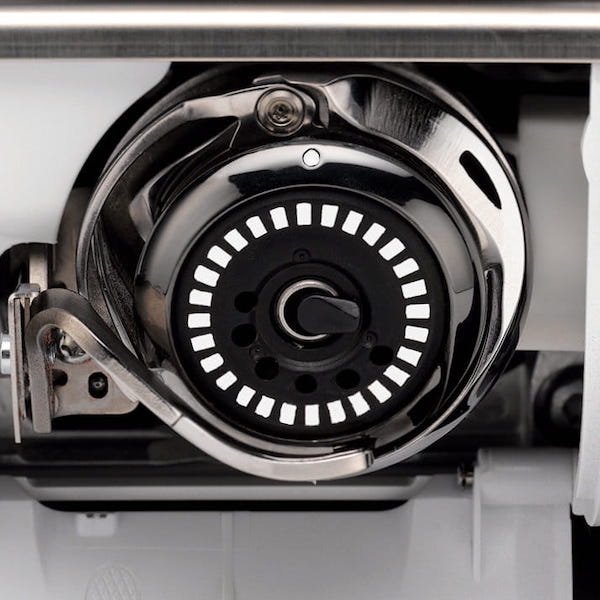Getting to Know the 880
I have canning class today so I spent yesterday morning cleaning the kitchen and gathering supplies. I listened to Nicole Sauce’s Friday homestead update podcast while I worked, and she mentioned making Salisbury steak for dinner. I decided that sounded really good, so I got out ground beef to thaw and washed potatoes for potato salad. I wanted to make zucchini bread, too, but ran out of steam after lunch. I spent a couple of hours playing with the 880, instead.
The 880 has some quirks. There is no getting around that. Let me say right off the bat, though, that I like this machine very much despite those quirks. I told the husband that it feels like someone gave me the keys to a BMW 7-series and sent me out to drive on the Autobahn. (I can dream.) However, there is a tension—no pun intended, sewists—between designing the sewing machine that exists in the imagination of a Bernina engineer and designing a machine that your average sewist is happy using. It’s similar to the tension that exists between automobile designers and end users. It’s possible to design a vehicle on a computer that makes engineers giddy with excitement; that same design may frustrate drivers and cause my husband to say lots of bad words when he has to work on the vehicle. (He’s not fond of architects, either.)
[My very first car was a 1988 Chevy Cavalier. The husband and I were not yet married when he helped me change the oil in it. The engineers had put the oil filter in an inaccessible area behind a partition. Imagine my horror when the first thing the husband did was get a pair of heavy shears and cut a wedge out of that partition so he could get to the oil filter. 😮]
Knowing all of that, I approached this machine with the mindset of an engineer and asked myself why the Bernina designers made the choices they did. I’ve sewn on—and inspected the guts of—many kinds of machines. There are lots of routes to the same destination. Much depends on what kind of journey you want.
I also watched several videos about threading and using the machine. Even so, I threaded it wrong the first time, which was unintentional but educational. Now I know what NOT to do. Threading it the second time was easier as a result. The 880 has a unique bobbin-and-hook system with a jumbo bobbin. This mechanism actually sits behind the needle rather than in front of or to the side of the needle. Opening the door to the bobbin area causes the whole assembly to swing down and forward.
Bernina machines have a lot of on-board assistance, although they also provide for the ability to override settings. That level of control is one of the differences between Bernina and BabyLock sergers, for instance. BabyLock went the route of making tension adjustments automatic on their higher-end sergers, with no way to override them. The Bernina sergers have default settings for each stitch, but the user can tweak them as needed. I liken it to the difference between driving a car with an automatic transmission and one with a manual transmission. Some sewists don’t want to have to tinker with settings, and for them, a machine that makes those decisions is a better choice. Until I become more familiar with the interface and the machine’s capabilities, I like that it lets me know what settings to use.
This is a machine I never dreamed of having, at a price I was comfortable paying, so I am willing to put up with some oddities. I am excited about having embroidery capabilities, although exploring that module is going to have to wait until later in the fall when canning season is over. I’ve also got a wishlist for a few additional presser feet. I suspect the 880 may do a better job of handling knit fabrics than the Janome 6600 did. More and more, I think the 6600 was designed for quilting and not so much for general sewing. I really disliked the zipper foot on that machine; most of my zipper insertions were done on the Necchi BF.
The Salisbury steak and potato salad made for an excellent dinner even without zucchini bread for dessert.

